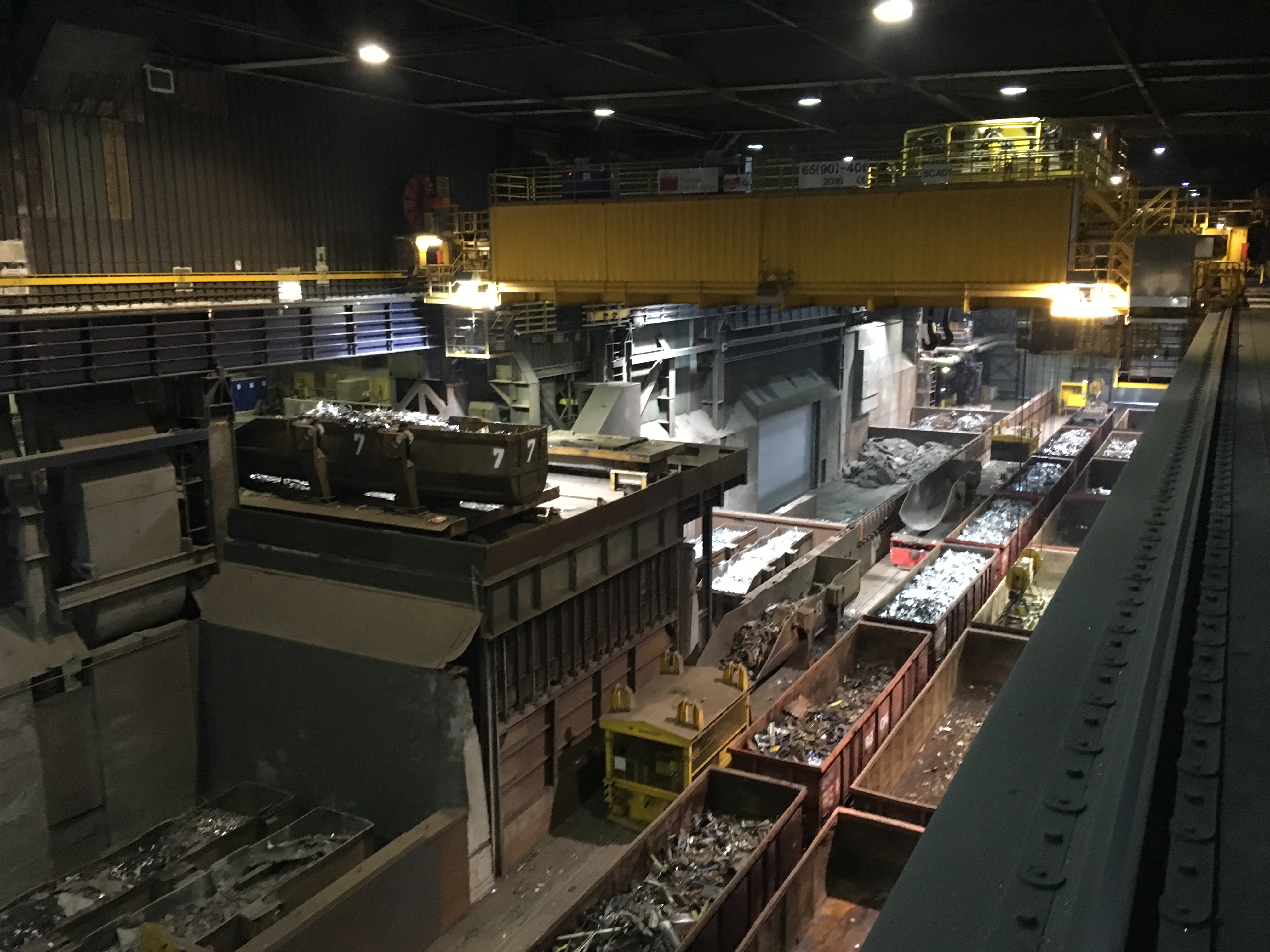Hüttenwerke Krupp Mannesmann GmbH (HKM) based in Duisburg is Germany’s second-largest integrated smelter, specializing in the production of steel and preliminary products for the processing industry. Aside from pig iron, various types of scrap are supplied via skips for the production of molten steel in converters. The skips containing approximately 32.5 tons of scrap in compositions depending on the melt are loaded from rail cars by two overhead cranes in an outer hall. The company had to carry out costly additional processes because the required scrap throughput was not being reached. Since the throughput is expected to increase going forward, the pressure to act was mounting.
HKM therefore commissioned Fraunhofer IML to develop a scrap supply concept that would increase the handling capacity. Fraunhofer IML recorded the processes to start off the project. Activities focused mainly on a comprehensive analysis of weaknesses, for example crane and trolley positions over time. Subsequently the scientists compiled the multilayered identified weaknesses in a cause-effect relation.
Fraunhofer IML identified mutual obstruction of the cranes as the main influencing factor on hall throughput – resulting from the location of the dumpers, rail cars, and supply points relative to each other, and in part also from the suboptimal division of work between the cranes. Subsequently Fraunhofer IML derived and evaluated improvement measures, primarily regarding the layout, and drafted concrete implementation recommendations including the outlook for medium and long-term measures.
 Fraunhofer Institute for Material Flow and Logistics IML
Fraunhofer Institute for Material Flow and Logistics IML
